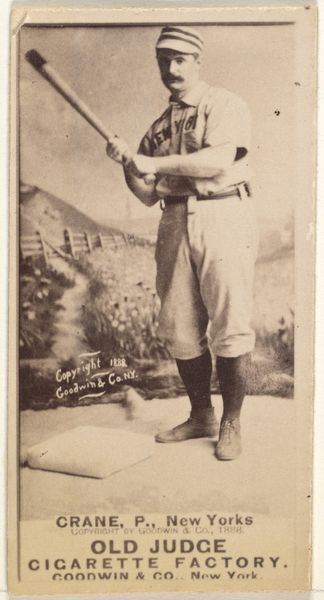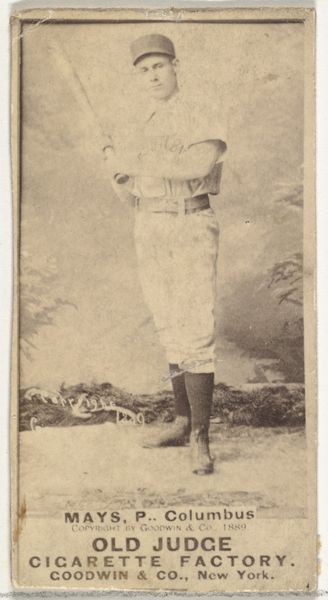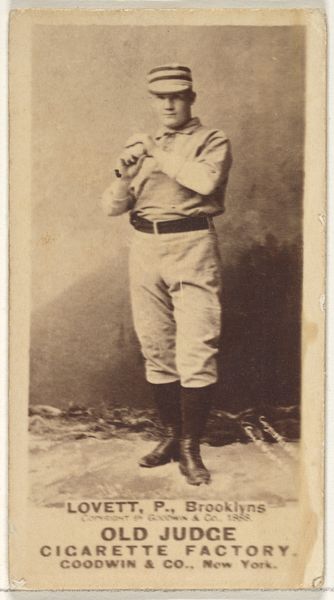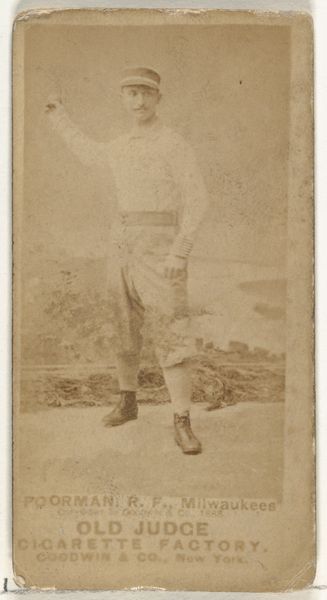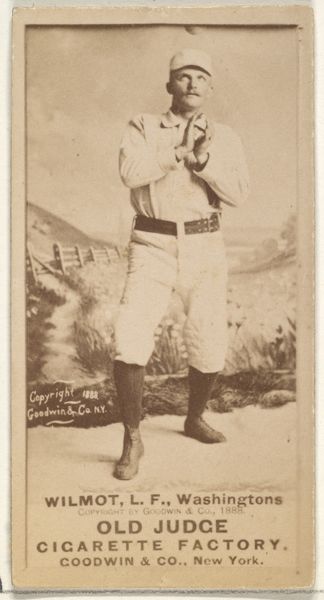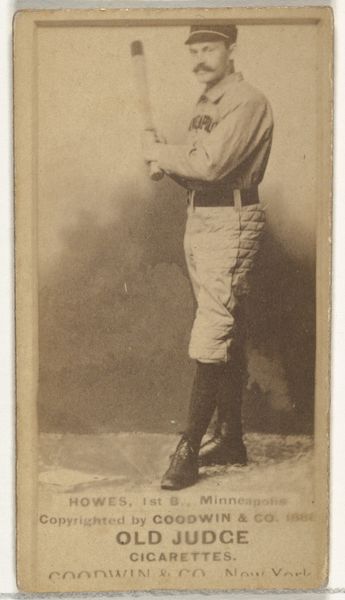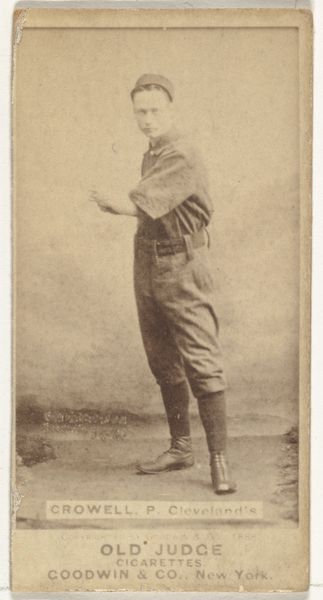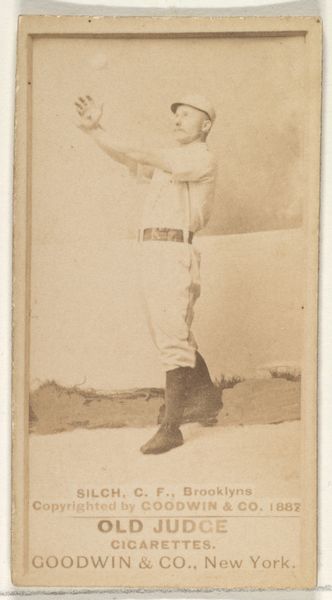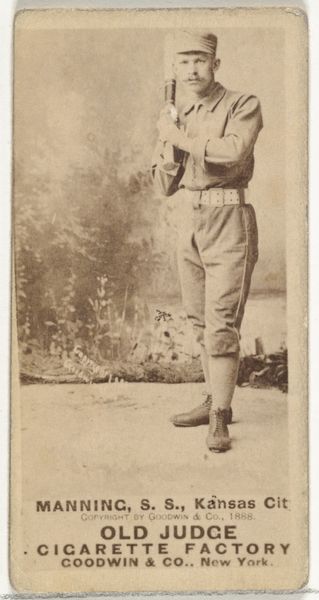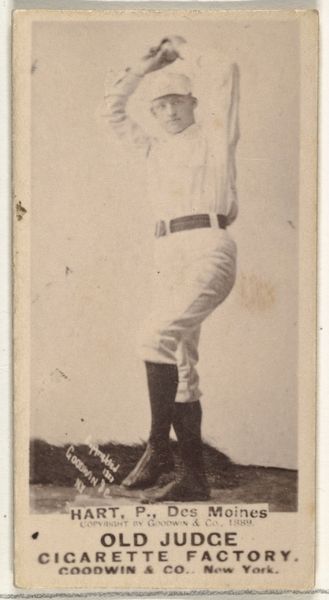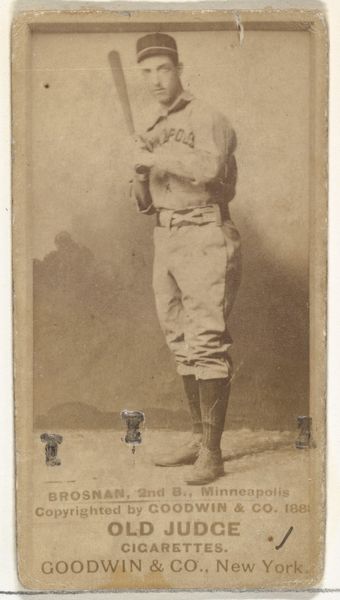
Michael J. Slattery, Left Field, New York, from the Old Judge series (N172) for Old Judge Cigarettes 1888
0:00
0:00
drawing, print, photography
#
portrait
#
drawing
#
pictorialism
# print
#
baseball
#
photography
#
men
#
genre-painting
#
athlete
Dimensions: sheet: 2 11/16 x 1 3/8 in. (6.9 x 3.5 cm)
Copyright: Public Domain
Curator: Examining this photograph of Michael J. Slattery from 1888, part of the "Old Judge" series for Old Judge Cigarettes, made by Goodwin & Company, tells us a lot about the production and consumption of images during this period. Editor: Absolutely. The Metropolitan Museum has it categorized as a print made using photography. It strikes me how seamlessly sport and consumer culture were being blended, even back then. What are your thoughts on how this piece should be approached, viewed as an artwork? Curator: Well, let’s consider the material conditions. It's a photographic print meant to be collected and consumed along with cigarettes. That means its value wasn't purely aesthetic; it was a commodity circulated within a specific economic system. How does that shift your understanding? Editor: It makes me think about the labor involved. Not just Slattery's athletic work, but the photographers, the printers, the factory workers… it's a whole chain of production tied to this one image. Does the fact that it was attached to cigarette sales affect how we view it now, ethically? Curator: Precisely. It forces us to confront the ethical dimensions of image-making and distribution. Consider the social context: Cigarette advertising, the burgeoning popularity of baseball, and the rise of celebrity culture. The material and cultural are inextricably linked. Would you call this ‘high art’? Or something else entirely? Editor: It’s definitely challenging that traditional hierarchy. Thinking about the sheer volume of these cards that were produced and distributed, it’s hard to ignore the impact on visual culture. I’d say it is both – a mass-produced object elevated to art through its historical and cultural relevance. I had never considered photographs being “collected” this early! Curator: Exactly! By centering process and materials, we gain insights beyond just the surface-level image. The Old Judge series reveals a fascinating intersection of labor, materiality, and consumerism. I also didn’t realise there were companies that would put baseball players on print; it almost makes you wonder what is on today's commercial baseball cards. Editor: Definitely, and that makes me look at it very differently now.
Comments
No comments
Be the first to comment and join the conversation on the ultimate creative platform.
